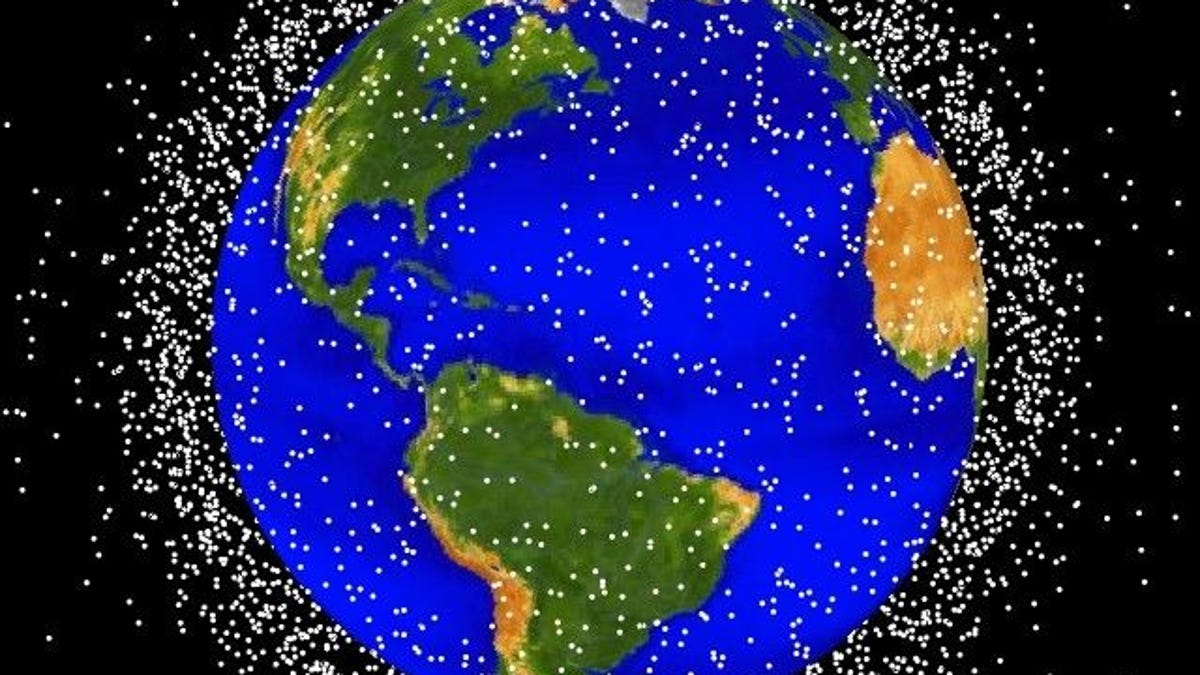Space junk even worse than what we can see, astronomers say
The orbit used by many satellites is filled with unidentified objects that could pose a threat.

Orbital debris, not functional satellites, make up 95 percent of the objects in this computer-generated illustration of objects in low-Earth orbit.
The debris and detritus orbiting above our heads has been multiplying as humans send more and more satellites and rockets into space. All that space junk can pose a threat to operating satellites, and new research suggests that the problem could be much worse than previously thought.
Astronomers at the University of Warwick attempted to cross-reference detected orbital debris in geosychronous orbit -- the altitude where many large communications satellites circle our planet -- with objects in public satellite catalogs. They found that more than 75 percent of the debris did not have a match.
Most of the unknown objects were faint and small, measuring 39 inches (one meter) or less.
"Many of the faint, uncatalogued debris appear to be tumbling," said Ph.D. physics student James Blake in a statement. "We need to probe the faint debris population further and obtain more data to gain a better understanding of what's out there."
Blake is lead author of a paper to be published in an upcoming issue of Advances in Space Research.
The artificial debris in orbit could be fragments of defunct satellites or rocket bodies, or even deteriorating pieces of insulation or paint flakes. Sometimes large pieces of space junk collide, creating even more small pieces and increasing the threat. In the frictionless vacuum of space, objects can whip around Earth at thousands of miles per hour, allowing even small objects to do serious damage upon impact.
Just this week the International Space Station, which orbits at a much lower altitude than the area surveyed, performed an evasive maneuver from an "unknown piece of space debris" that came a little too close for comfort.
Astronomers and people in the space industry have long worried about the threats posed by space debris, from the outside chance of an impact with earth's surface to a chain reaction of collisions in orbit known as the Kessler Syndrome that could make the region above Earth so dangerous that humans essentially lose all access to space.
"It's important that we continue to observe the geosynchronous region with large telescopes wherever possible, to start to build up a more complete feel for the faint debris environment," Blake emphasized.
Scientists plan to use the data from such observations to develop algorithms that ultimately will be able to better identify different types of space junk and keep better track of them.

